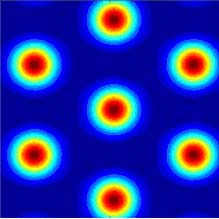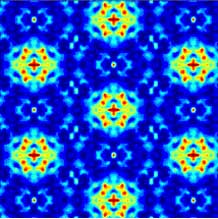Fractal Pattern Formation
Contents -
Turing Instability and Simple Patterns |
Multi-Turing Characteristic and Fractals |
Verification of Spontaneous Spatial Optical Fractals |
Further details
Turing Instability and Simple Patterns
A Turing instability is a susceptibility of uniform systems to become spontaneously "patterned" [A. M. Turing, “The chemical basis of morphogenesis,” Phil. Trans. Royal Society of London 237, 5 (1952)]. This instability plays a fundamental role in generating simple patterns in Nature. Nonlinearity (a type of feedback) drives the emergence and persistence of patterns, such as stripes and hexagons, in many diverse contexts - those studied in physics, chemistry, biology, fluid dynamics, meteorology, zoology, economics, etc.
Turing described an origin of simple patterns in nonlinear systems in terms of variation of a key system variable (the "control parameter"). This parameter has a correspondence with how susceptible the system is with respect to the growth of patterns with different length scales. As sketched below, one often finds that a particular pattern length scale λ has the highest rate of growth. This can lead to emergence of this particular simple pattern - characterising the self-ordering/self-patterning in, otherwise uniform, systems.
Turing Instability
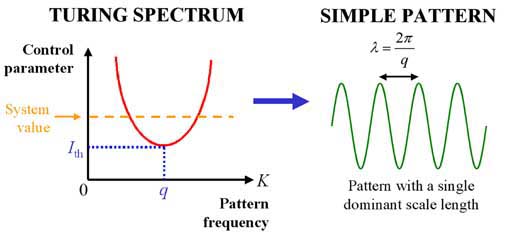
Turing instability. Simple self-patterning can arise when uniform nonlinear systems are subject to tiny pattern fluctuations (perturbations) - irrespective of how small these pattern fluctuations are. Turing proposed a mechanism that explains the spontaneous emergence of simple patterns in a vast range of contexts. Patterns grow faster when the (orange) system value is further above the (red) threshold curve.
Turing Pattern
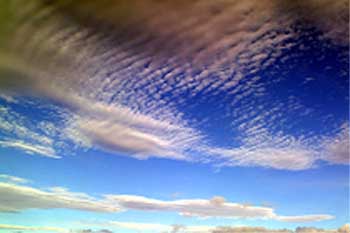 |
|
Typically, the systems themselves are actually very complex (involving many parts interacting nonlinearly) but the power of an inherent feedback process often leads these systems to express both a preference to be patterned and a characteristic pattern length scale.
Multi-Turing Characteristic and Fractals
Another universal type of pattern - “fractals” - can be viewed as the complete opposite of such “simple patterns”. Instead of having a single characteristic length scale, fractals are patterns that possess very many scale lengths - in fact, so many different scales that they are often called “scale-less” (i.e. lacking a characteristic length scale).
Fractals in Nature
Fractal patterns also appear in a diverse range of systems in Nature. For example, their appearance may be driven by fundamental growth mechanisms that can constitute system feedback (or “system nonlinearity”).
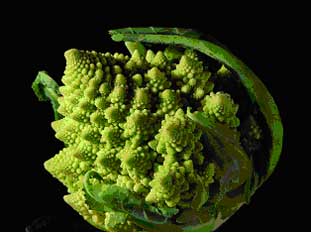 |
|
But, is there any connection between fractal formation and Turing's proposal of how universal simple patterns arise?
Over the previous 20 years, we and co-workers have been predicting and studying simple pattern formation in a range of optical systems. We then realised that analysis of nearly all of these systems revealed a hierarchy of Turing modes. These modes could, in principle, be allowed to contribute to pattern formation if their role was not suppressed by some kind of filtering mechanism. We also noted, in our earlier discovery of fractal laser modes, that contributing length scales can appear in frequency bands (rather than a continuous distribution of different length scales).
Can a multi-Turing instability spectrum be a characteristic that predicts spontaneous fractal pattern formation?
Multi-Turing Instability
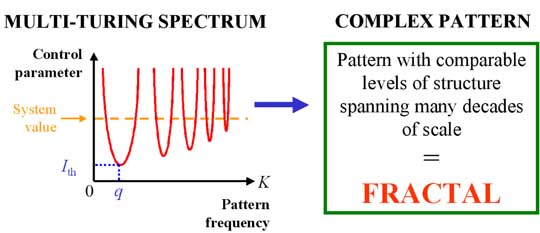
A multi-Turing instability spectrum appears in the analysis of many optical systems. Does the pattern q, with highest growth rate, always dominate the final pattern that forms? Can such a multi-mode instability spectrum be a universal characteristic that predicts spontaneous fractal pattern formation?
Verification of Spontaneous Spatial Optical Fractals
We investigated whether systems with multi-Turing instability spectra would indeed be susceptible to spontaneous fractal pattern formation. We proposed that such a signature could indicate a universal mechanism for fractal formation in nonlinear systems. Universality would imply that this signature could predict fractal formation that is independent of both the detail of the physical system (e.g. in optics, whether this arises in interacting beams or in single- or multi-mirror configurations) and the particular type of material nonlinearity, or feedback loop, that drives the pattern formation.
One of the simplest nonlinear optical systems was analysed. This comprises a uniform diffusive/relaxing Kerr material illuminated by uniform (plane-wave) laser light. A Kerr medium is nonlinear since it induces a “self-lensing” effect. Most of the light is reflected back, towards the medium, by a (uniform) mirror.
Optical Fractal System
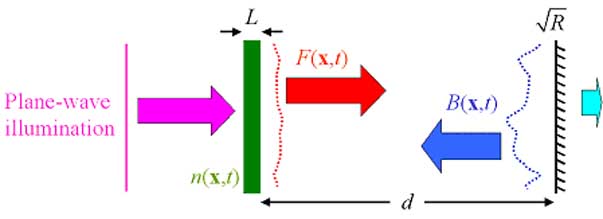
Optical Fractal System. Any small disturbance, for example noise in the medium, triggers the self-lensing (i.e. Kerr) effect of the medium (green). This effect imprints a phase pattern on the transmitted light (red). As this light travels a distance 2d to a mirror and back again, linear diffraction converts the phase pattern into an amplitude pattern (blue). When light passes through the medium again, this amplitude pattern induces its own phase pattern on the forward light (red). This creates a loop for amplification of small-amplitude patterns (e.g. noise disturbances).
Results from analysis of this simple system are shown below. Two cases are graphed: when the Kerr medium excitations have fixed location (no diffusion), and when these excitations can diffuse around. The susceptibility of the system to formation of patterns is quantified with respect to the (inverse) length scale of pattern fluctuations K (smaller pattern sizes correspond to larger K).
Analysis of Optical Fractal System
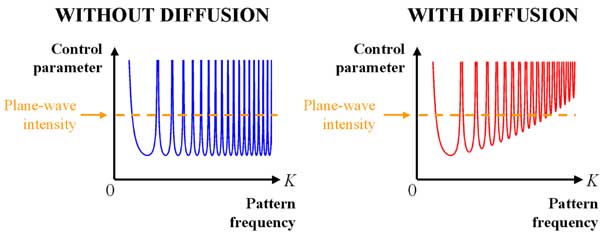
Analysis of Optical Fractal System. Multi-Turing instability spectra for the Kerr-single-mirror system. The illuminating (plane-wave) light intensity defines a “control parameter” - quantifying how strongly the system is driven. The curves show the predicted threshold intensity, above which different pattern bands will have a finite growth rate. The presence of medium diffusion leads to an envelope on the threshold curves (raising thresholds for growth of smaller patterns).
Full numerical simulations allow us to extend analysis to consider fully-developed pattern formation. We firstly consider when some filtering in the system only allows pattern growth with the largest length scale (within the instability band that has lowest K). Any small noise that is introduced into the medium, or on the illuminating light, is found to lead to stable hexagonal pattern formation [see part (a) below]. A hexagonal pattern of bright light spots appears in the cross-sectional plane (that perpendicular to the direction that the light is travelling in).
Secondly, we then remove the filtering in the system and investigate whether and how the smaller scale patterns will spontaneously grow. Part (b) shows a snapshot during the progressive growth of transverse patterns with smaller and smaller length scales. We stress that both the initial (hexagonal) pattern and the subsequent growth of smaller-scale patterns are driven solely by the intrinsic nonlinear dynamics of the system.
Results (movies) - Simple and Fractal Pattern Formation
|
Simple and Fractal Pattern Formation. Spontaneous patterns in the light intensity profiles (cross-sectional samples - transverse to the direction of light propagation).
- Part (a) Simple Pattern Formation. When small-scale patterns are deliberately filtered out of the system, hexagonal simple pattern formation results. This pattern forms from any background noise within the, otherwise uniform, system - a classic Turing instability giving rise to simple/conventional pattern formation.
- Part (b) Fractal Pattern Formation. When the high-K filtering is removed, a spontaneous cascade to a fractal pattern is observed.
Further Details
For more details of this work, and background references, please see our Physical Review Letter.
